Using a modern EF stills lens for shooting video has its draw backs, these lenses were designed for photographers and were never meant to be used for video after all. The main issue is that modern stills lenses don't have a manual iris as this function is performed by the camera body. Changing iris mid shot then becomes impossible, unless you are a fan of big half stop aperture jumps. There are other problems with these lenses, owing to the auto focus feature. Auto focus is useless to the cameraman and it usually means that the focus ring will rotate indefinitely, meaning that making focus marks, either on the lens or on a follow focus, is impossible. There is also the issue of throw: the distance the lens has to rotate to focus between its closest range and infinity is very small. Pulling focusing between smaller distances therefore becomes tricky. Lastly, if you are using zoom lenses, there is the problem of back-focus. If you zoom in fully, find focus, then pull out, you will loose focus. Having said all of this, there is a big plus of using stills lenses for video: price. I think you get great optics for a small price, mainly as these are popular mass marketed products.
There are lots of different options when it comes to using manual iris, the first of these is to use a lens that is actually designed for shooting video. However, dedicate film/video lenses are not cheap.
Zeiss CP2s
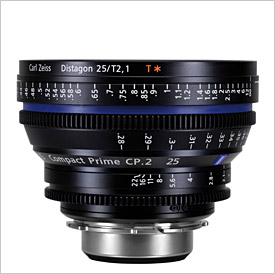 Price: around 4,000 USD or 3,500 UKP per lens
Price: around 4,000 USD or 3,500 UKP per lens
Zeiss Compact Primes have interchangable mounts, so you can use them on your HDSLR, other EF cameras, or a PL mount. Zeiss have a long history of making lenses, their top end Master Prime series are favoured by Cinematographers like Roger Deakins, so it is safe to say they know what they are doing. Their lenses have really good colour rendition and high contrast, optically you know you are getting somthing decent here. The lenses are in metal housing and feel really solid when compared to a stills lens. The focus distances are acurately and clearly marked, this is pretty much essential if you are working with a focus puller, as they would have a nighmare with an EOS stills lens. Even when you are working without an assistant (as I always do) I find the focal marks really useful. Just remembering the distance marks and pulling between them becomes much easier and the larger throw also helps with acurate focusing over small distances. Before you rush out and buy a set, here are a few negatives. Firstly, the price, these lenses are by no means cheap. The throw on these lenses, whilst making life easier for fine focusing or use by focus puller, works to your disadvantage when doing fast pace shooting alone. They have a 300 degree of rotation and they are fairly large lenses, so imagine how much you have to turn the lens when making a large distance pull. CP2s are also a fairly heavy and large compared to a still lens, this may or may not be an issue to you, depending on your set up. Lastly, they are not that fast compared to top end stills lenses. The fastest CP2s are T2.1 and the slowest in the range (18mm) T3.6
Canon Cinema Primes
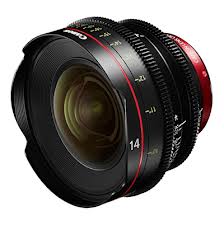 Price: around 5,000 USD or 3,500 UKP per lens
Price: around 5,000 USD or 3,500 UKP per lens
Obviously the Canon Cinema primes have the same basic advantages as the CP2 above (I am not going to compare the look of the 2 lenses, as I am sure this is covered in detail elsewhere on the web). The big difference here is speed. The Canon Primes are quite a bit faster. The 50mm and 85mm are T1.3 compared to the Zeiss T2.1
The next, and much cheaper option, is to get an old manual stills lens and pay for it to be modified into a cine style lens. There are several lenses which can be modified in this way. The main work that needs to be carried out includes: de-clicking the iris wheel, making it into a smooth iris control, changing the backs, so your old style mount becomes an EF mount. You can also have a solid focus gear added for easy use with a follow focus. In the USA these are done by Dulcose Lenses and in the UK there is The Lens Doctor.
Zeiss ZF
P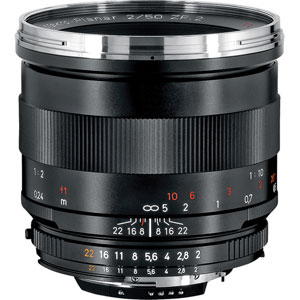 rice: 50mm Planar 619 UKP 725 USD (+modification costs)
rice: 50mm Planar 619 UKP 725 USD (+modification costs)
Apparently Zeiss ZF and ZE mounts use the same glass as the Zeiss CP2s that are several thousand pounds more expensive. The Canon mount ZE mount don't have iris control, which leaves us with the Nikon mount ZF range. These lense can be sent away to be modified into something more useful to a cameraman. I have used both Zeiss ZE and ZF lenses (modified by the lens DR in the UK) and loved using them. They are small lightweight lenses, and I find the throw is big enough to be good for fine focus pulls, but not so big as to make it a mission for a single operator. The only issue I have with these lens is the focus direction. Nikon lenses focus in the oposite direction to Canon, for me this is a bit of a nightmare, as my instinct will always be to rotate the wrong way. To get the focus direction reversed anywhere in the West is prohibitively expensive (you might as well just go out and buy a Cinema lens). I did read of a company in China called GL Optics on Dan Chung's DSLR New Shooter, but this means sending the lenses to China (not something I'd be keen to do).
Leica R
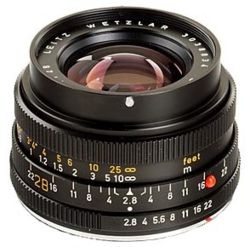 Price: 50mm (aprox 500-600 USD, 400 UKP) Rough prices on Ebay.
Price: 50mm (aprox 500-600 USD, 400 UKP) Rough prices on Ebay.
I have personally never used a Leica, but firsly they have a good name when it comes to making quality glass, and secondly they are well regarded by Matthew Dulcos at Dulcose lenses as good lenses to convert. Although they are not as easy to find as Zeiss ZF lenses, if you manage to pick up an old Leica R in good condition you could have yourself a bargain.
Canon FD
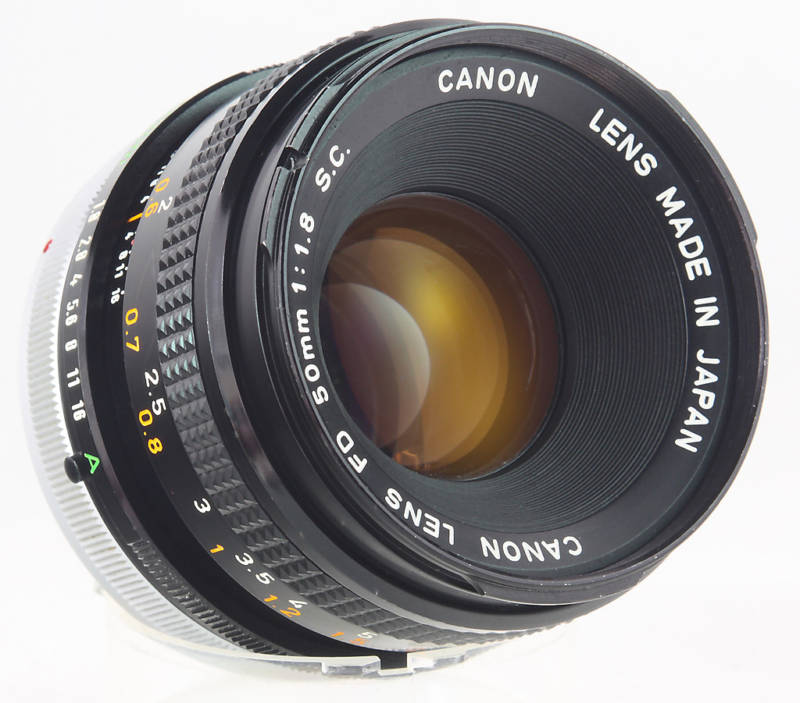 Price: This varies on Ebay, but is very cheap 20-50 UKP 20-60 USD
Price: This varies on Ebay, but is very cheap 20-50 UKP 20-60 USD
On paper these lenses make sense, they rotates in the right direction, the speed is pretty fast (the 50mm is 1.8) however, there are several issues with using these lenses. Firstly, the lenses are not pin sharp when wide open (anywhere from 2.8 to 1.8) Secondly, they require a 2nd peice of glass to adapt them for use on EF mount, this means you lose a stop of light, the lens becomes slightly cropped, and putting any extra bit of glass in the lens is also a worry with optical quality. There are also several videos out there that demonstrate a glowing or halo effect on bright object in certain shooting situations. That said, there are also videos that show the lens performing well in other conditions. These issues rule FD lenses out for me, I couldn't afford to fail a quality control test from a broadcast, just because I wanted to save a few hundred pounds on a lens. If I was a student film maker, or using my lenses only for corporate web productions, I would almost definitely buy a set, for the price alone.
